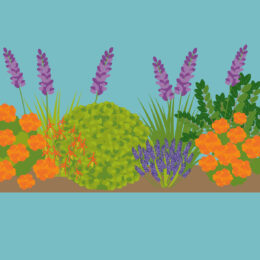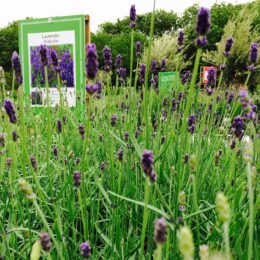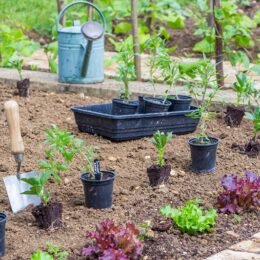The centrepiece of almost every British garden is the grass lawn. Whether used as a playground for children, a haven for picnics and relaxation or kept as a glorious striped showpiece, lawns can be both functional and a design feature.
Spring and autumn is the ideal time to restore your lawn. This will prepare your lawn for the rigours of winter weather and improve its quality and health, right through till next spring, ready for another summers’ use. Tasks to be carried out include moss control, scarification, aeration, and topdressing, repairing bare patches and feeding. Not all of these tasks will be necessary every year, but for best results they will need to be carried out in the correct order.
Moss Control
Dealing with moss is the most common problem that needs to be tackled in lawn maintenance. Specific lawn moss killers are available to help tackle this problem and should be applied several weeks before scarification takes place to allow the moss to turn black and die.
The main causes of increased moss growth in a lawn are a lack of light and a lack of drainage. These are a direct result of soil compaction. By tackling this problem you can eradicate extensive moss growth and improve the quality and life of your grass.
Scarification
Once moss has been killed by a moss killer it can be removed by vigorously raking the lawn surface in all directions with a spring-tined rake. This is known as scarification and will remove any moss and additional plant debris that can build up on the surface of your lawn, known as thatch.
Thatch and moss will cause additional stress to your grass plants by preventing water from penetrating their root systems and will encourage diseases.
Scarification can look drastic and messy but by removing all of the thatch and moss you are allowing air and water to penetrate into the grass, creating more favourable growing conditions for the grass to grow in.
Aeration
Moss and thatch will thrive in growing conditions that grass hates; compacted, nutrient free soil. Heavy traffic on a lawn can cause very severe compaction which causes problems with drainage and encourages the growth of moss. Following scarification, improve drainage by aerating your lawn.
Aeration can be carried out with hollow tined forks or mechanical aerators but for the average sized lawn, a garden fork works just fine. Drive your fork into the ground at regular intervals of around 6 inches.
Top-dressing
After your lawn has been scarified and aerated work a top-dressing mix evenly across the grass and work them into the air holes created in aeration using a stiff broom.
Typical top-dressing mixes will include a mix of sandy soil and organic matter. This will encourage better rooting and thickening of your grass.
Repairing
Damaged or worn areas of grass can be replaced or reseeded by lightly forking over the area and sowing an appropriate seed mixture. To correct bumps and channels, slice through your grass and roll it back. Fork over, add or remove soil as required before folding back your grass and watering thoroughly.
Feeding
After constant and regular mowing during summer, grass will be severely lacking in nutrients. Applying a lawn fertiliser before the onset of winter will perk up your lawn to keep it healthy and green. Choose a specific autumn lawn fertiliser that contains high levels of Phosphate (P) and Potash (K).
Phosphates encourage strong healthy root systems, while the Potash will harden the plant against frost and encourage disease resistance. Never be tempted to apply a spring fertiliser in autumn as it contains higher levels of nitrogen, which encourages soft leaf growth that is more vulnerable to disease and is likely to be killed in heavy winter frosts.
After all this hard work it is important to maintain some autumn/winter after care by raking the lawn to keep it leaf free and avoid walking on the grass during frosty weather, as this can cause additional damage to your grass. These simple after care tasks will help to ensure that come spring your lawn will be something to be proud of, making all your hard work worthwhile!







